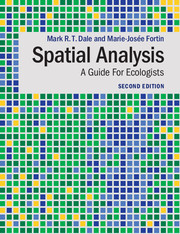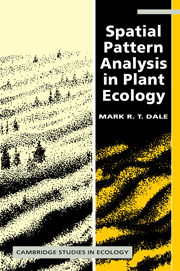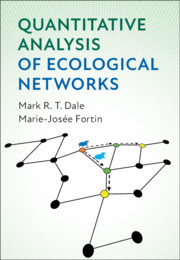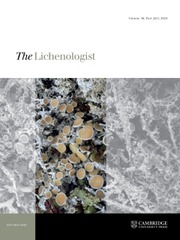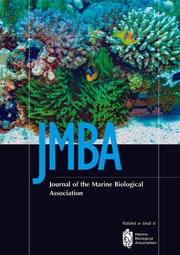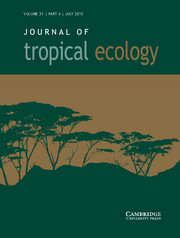Spatial Analysis
A Guide For Ecologists
2nd Edition
- Authors:
- Mark R. T. Dale, University of Northern British Columbia
- Marie-Josée Fortin, University of Toronto
- Date Published: October 2014
- availability: Available
- format: Paperback
- isbn: 9780521143509
Paperback
Other available formats:
eBook
Looking for an examination copy?
This title is not currently available for examination. However, if you are interested in the title for your course we can consider offering an examination copy. To register your interest please contact collegesales@cambridge.org providing details of the course you are teaching.
-
Nowadays, ecologists worldwide recognize the use of spatial analysis as essential. However, because of the fast-growing range of methods available, even an expert might occasionally find it challenging to choose the most appropriate one. Providing the ecological and statistical foundations needed to make the right decision, this second edition builds and expands upon the previous one by: • Encompassing the basic methods for spatial analysis, for both complete census and sample data • Investigating updated treatments of spatial autocorrelation and spatio-temporal analysis • Introducing detailed explanations of currently developing approaches, including spatial and spatio-temporal graph theory, scan statistics, fibre process analysis, and Hierarchical Bayesian analysis • Offering practical advice for specific circumstances, such as how to analyze forest Permanent Sample Plot data and how to proceed with transect data when portions of the data series are missing. Written for graduates, researchers and professionals, this book will be a valuable source of reference for years to come.
Read more- Reviews and compares a broad range of methods, enabling students and researchers to both identify and apply them correctly
- Includes application boxes and examples, showing how the theoretical results are applied to real situations
- Examines the state-of-the-art developments in the field, making them more accessible with illustrations and graphs
Reviews & endorsements
'Spatial Analysis: A Guide for Ecologists is every bit the reference book it was crafted to be, and will be a useful reference for students, researchers and practitioners with all levels of experience.' Ricardo A. Correia, The Biologist
Customer reviews
Not yet reviewed
Be the first to review
Review was not posted due to profanity
×Product details
- Edition: 2nd Edition
- Date Published: October 2014
- format: Paperback
- isbn: 9780521143509
- length: 454 pages
- dimensions: 246 x 189 x 22 mm
- weight: 0.95kg
- contains: 402 b/w illus. 34 tables
- availability: Available
Table of Contents
Preface
1. Spatial concepts and notions
2. Ecological and spatial processes
3. Points, lines and graphs
4. Spatial analysis of complete point location data
5. Contiguous units analysis
6. Spatial analysis of sample data
7. Spatial relationship and multiscale analysis
8. Spatial autocorrelation and inferential tests
9. Spatial partitioning: spatial clusters and boundary detection
10. Spatial diversity analysis
11. Spatio-temporal analysis
12. Closing comments and future directions
References
Index.
Sorry, this resource is locked
Please register or sign in to request access. If you are having problems accessing these resources please email lecturers@cambridge.org
Register Sign in» Proceed
You are now leaving the Cambridge University Press website. Your eBook purchase and download will be completed by our partner www.ebooks.com. Please see the permission section of the www.ebooks.com catalogue page for details of the print & copy limits on our eBooks.
Continue ×Are you sure you want to delete your account?
This cannot be undone.
Thank you for your feedback which will help us improve our service.
If you requested a response, we will make sure to get back to you shortly.
×
